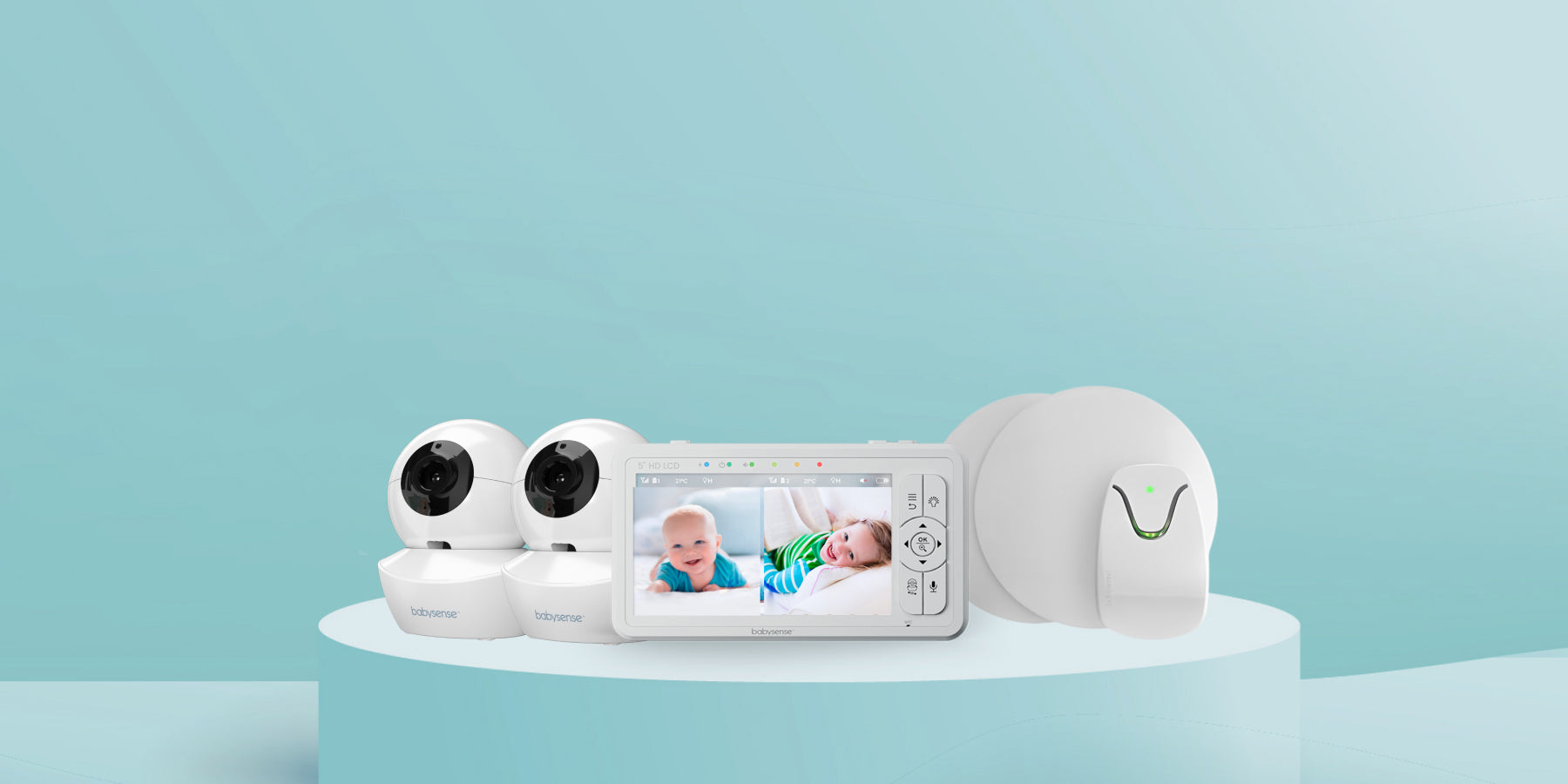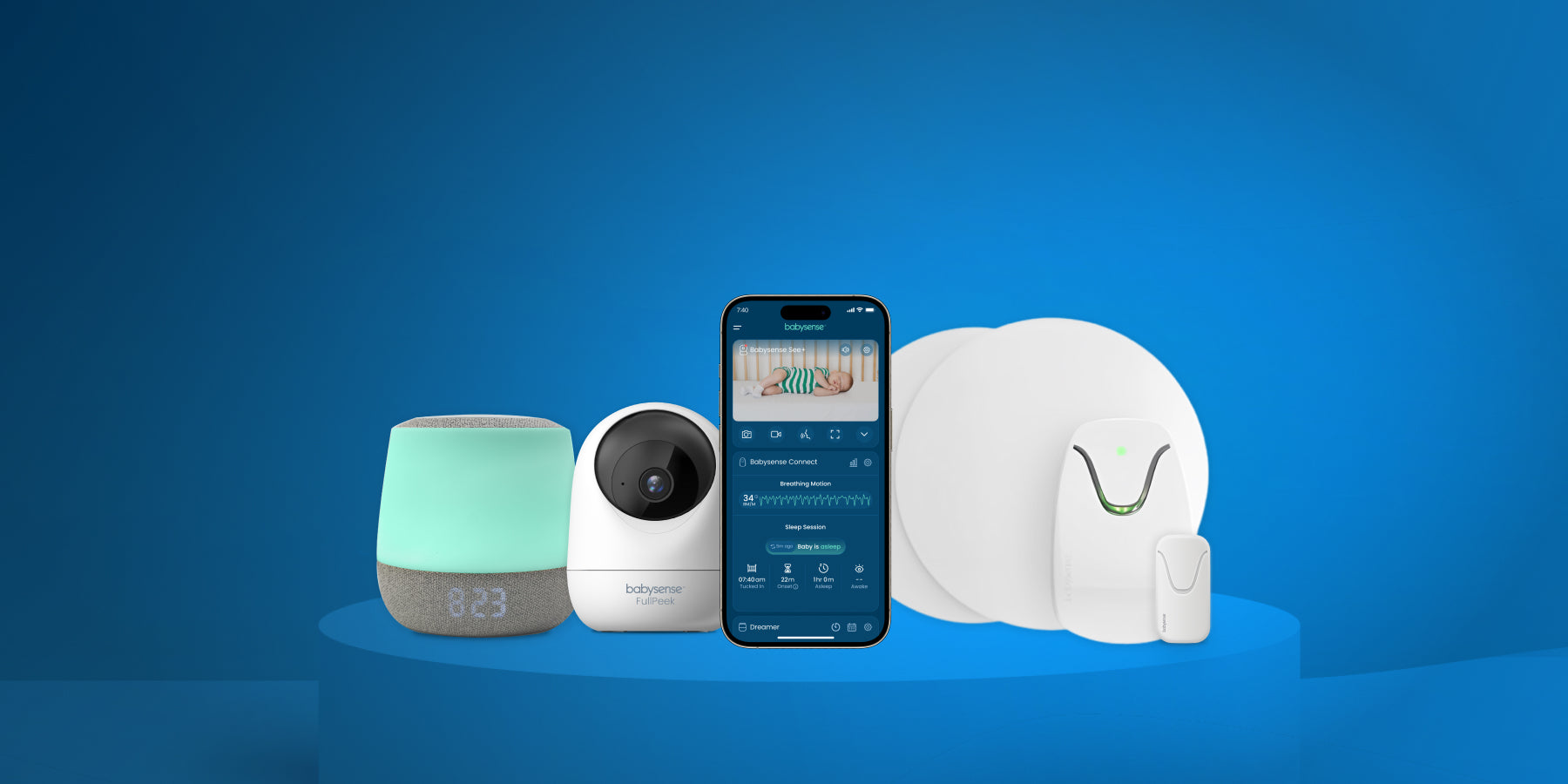Why Reading This Matters
Buying a baby monitor today isn’t just about seeing a crib; it’s about peace of mind, data‑driven parenting and future‑proof value. After analysing 30k Google search queries and feedback from 4,200 Babysense customers, we’ve distilled the ten features parents care about most in 2025—plus how to spot them on spec sheets (and where our own monitors deliver).
TL;DR
• Prioritise secure, low‑latency connections before fancy extras.
• 1080 p video is now the baseline for clear night checks.
• Split‑screen + multi‑cam support tops the wish‑list for growing families.
Quick‑View Table
| Rank | Feature | Why Parents Want It | See It In |
|---|---|---|---|
| 1 | Split‑screen & multi‑camera support | Watch twins or nursery + playroom at once | Babysense MaxView, Infant Optics DXR‑8 Pro |
| 2 | 1080 p HD video & color night vision | Clear detail to confirm breathing, not shadows | Babysense MaxView, Miku Pro 2 |
| 3 | Non‑Wi‑Fi FHSS security | Zero hacking risk, no monthly cloud fees | Babysense Split‑Screen HD, Eufy SpaceView Pro |
| 4 | 30‑hour battery life (parent unit) | Overnight monitoring without tethered charging | Babysense MaxView (5,000 mAh) |
| 5 | Pan‑Tilt‑Zoom + wide‑angle lens | Follow a crawling toddler or see the whole room | Motorola PIP1510, HelloBaby HB6550 |
| 6 | Temp & humidity sensors | Creates a safer, SIDS‑reducing sleep environment | Babysense monitors (built‑in) |
| 7 | Two‑way talk & lullabies | Soothe without entering the room | Nanit Pro, Babysense Split‑Screen |
| 8 | Cry / motion detection & VOX | Screen lights up only when needed—maximises sleep | Owlet Cam 3, Babysense models |
| 9 | Extended 1,000 ft range | Works in yard, garage, thick‑wall homes | VTech DM221 (audio), Babysense MaxView |
| 10 | App integration & AI insights | Sleep analytics, share clips with grandparents | Nanit & Owlet ecosystems |
Detailed Breakdown of Each Feature
1. Split‑Screen & Multi‑Camera Support
As families add siblings—or want eyes on the playroom too—dual‑display and quad‑view layouts jump to the top of the shopping list. Look for:
-
Dedicated split‑screen button (so you’re not buried in menus)
-
Independent pan/zoom per camera
-
Expandability to at least four cams (future‑proofing)
Why it matters: Parents tell us switching feeds every 5 seconds is stressful. Split‑screen keeps you in control.
2. 1080 p HD + Color Night Vision
Blurry VGA feeds are officially obsolete. Full‑HD sensors with F1.6 lenses now deliver crisp images—even under infrared. Bonus points for color night vision, which preserves skin‑tone cues.
3. Non‑Wi‑Fi FHSS Security
True peace of mind means eliminating hacker headlines. Frequency‑Hopping Spread Spectrum (FHSS) encrypts the signal and jumps channels hundreds of times per second—no router required, no data in the cloud.
4. 30‑Hour Battery Life
Nothing’s worse than a dead parent unit at 3 a.m. Aim for ≥ 4,000 mAh batteries or USB‑C power banks that offer quick‑charge.
5. Pan‑Tilt‑Zoom & Wide‑Angle Lens
Babies move. Toddlers escape. A 355° pan and 110° tilt prevents blind spots, while a 4× digital zoom lets you confirm if that’s a pacifier or a sock.
6. Temperature & Humidity Monitoring
Overheating is a known SIDS risk. Integrated sensors trigger alerts when the room drifts below 64 °F or above 72 °F, and when humidity dips <40 % (dry coughs) or climbs >60 % (mold risk).
7. Two‑Way Talk & Lullaby Playback
Sometimes all a baby needs is to hear your voice—or “Twinkle Twinkle” on loop. Check for latency <300 ms to avoid talk‑back echo.
8. Cry / Motion Detection & VOX
Smart algorithms now distinguish cries from white noise, pushing notifications only when it matters. VOX (voice activation) blacks out the screen until sound is detected, saving power and your sleep.
9. Extended Real‑World Range
Manufacturers quote up to 1,000 ft line‑of‑sight. Our testing in a two‑story brick house shows 150–250 ft is realistic. Antenna diversity and FHSS outperform budget Wi‑Fi cams.
10. App Integration & AI Insights
For data‑driven parents, apps like Nanit Insights or Owlet Dream provide weekly sleep trends, highlight videos and shareable growth charts. Watch for hidden subscription costs—many services start charging after the first year.
FAQ
Is Wi‑Fi inherently unsafe?
Not if you change default passwords and keep firmware updated. FHSS simply removes the internet vector entirely.
Do I really need HD resolution?
If you’ll ever check breathing patterns or want saved memories, yes. HD also future‑proofs resale value.
What’s the sweet spot on price?
For most families, $150–$200 gets you split‑screen HD video, long battery life and rock‑solid FHSS security.
The Takeaway
The best monitors in 2025 nail fundamentals first (security, clarity, battery) then layer on smarts. Tick the ten boxes above and you’ll sleep easier—so will your wallet. Ready to see a model that covers them all? Explore the Babysense MaxView lineup or chat with our experts below.





